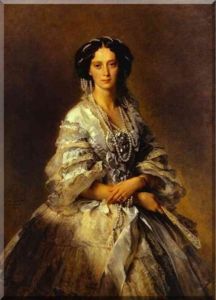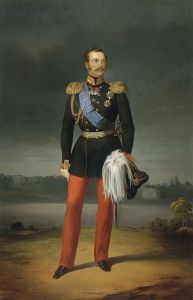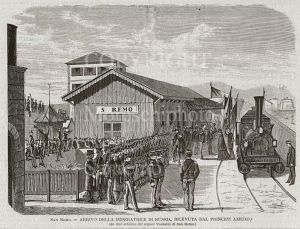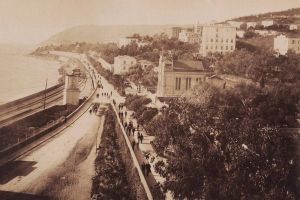An illustrious and beneficent guest
Mary of Hesse and the Rhine was born in Darmstadt, the capital of the Grand Duchy, on 8 August 1824 as Princess of the Grand Duchy, officially daughter of Grand Duke Louis II of Hesse-Darmstadt and his wife, Princess Wilhelmina of Baden, daughter of Crown Prince Charles Louis of Baden and Princess Amalia of Hesse-Darmstadt. Her maternal aunt, Luisa Maria  Augusta of Baden, was a czarina of Russia, as consort of Tsar Alexander I.
Augusta of Baden, was a czarina of Russia, as consort of Tsar Alexander I. In 1838 she met zarevic Alexander, who was travelling around Europe in search of a wife. Alexander fell in love with fourteen-year-old Maria and they got engaged.
In 1838 she met zarevic Alexander, who was travelling around Europe in search of a wife. Alexander fell in love with fourteen-year-old Maria and they got engaged.
They got married on 16 April 1841, despite the objections of Alexander's mother, Empress Aleksandra Fiodorovna. However, Tsar Nicholas ended up agreeing, aware of the beauty and gifts of the bride, as well as the love Alexander felt for her.
In 1855 Alexander became emperor and she, under the name of Maria Aleksandrovna, Empress of Russia as the wife of Emperor Alexander II.
She never managed to adapt to the elegant and refined life of the Russian Court and later, due to her husband's infidelity and suffering from tuberculosis, she hoped with the help of spa treatments to obtain relief from the evil that afflicted her.
In the summer of 1864 she began to return to Germany for spa treatment.
In her wandering around Europe, she also went to Nice in the years 1872-73, and came to Sanremo at the invitation of Countess Adele Roverizio di Roccasterone and Cav.Antonio Rubino (grandfather of the artist Antonio Rubino) and was among the first illustrious people who chose our town as a holiday resort. Coming from Nice, the Czarina arrived in December 1874 at the railway station of Sanremo, where she was welcomed by Duke Amedeo di Savoia-Aosta, son of Vittorio Emanuele II and by the highest authorities.
Coming from Nice, the Czarina arrived in December 1874 at the railway station of Sanremo, where she was welcomed by Duke Amedeo di Savoia-Aosta, son of Vittorio Emanuele II and by the highest authorities.  Since she was particularly satisfied with the period she spent in the Matuziana city, before her return to Nice, the Empress wanted to donate to the mayor and the citizens of Sanremo the beautiful palm trees she had planted on the promenade to embellish the western part of the city.
Since she was particularly satisfied with the period she spent in the Matuziana city, before her return to Nice, the Empress wanted to donate to the mayor and the citizens of Sanremo the beautiful palm trees she had planted on the promenade to embellish the western part of the city.
On 6th March 1875 the Municipal Council, presided over by the mayor Roverizio di Roccasterone, decided that the course where the palm trees stood should be named after the Russian Empress.
Despite the treatment, by then very weakened Tsarina died of such suffering on 27 May 1880 and was buried with all honors in the Cathedral of St. Peter and Paul in St. Petersburg.
(Free Elaboration: R.M; for biography, source Wikipedia)




